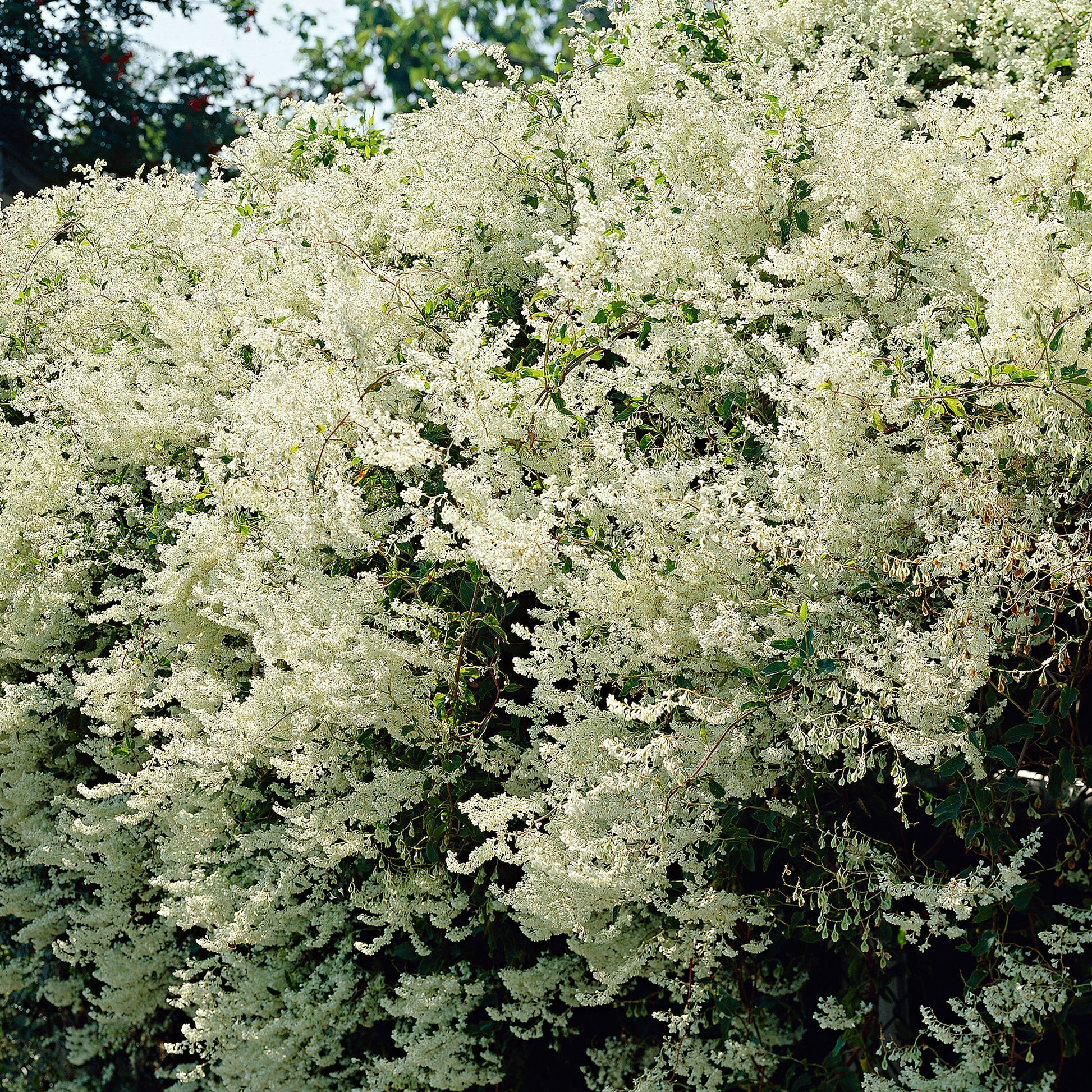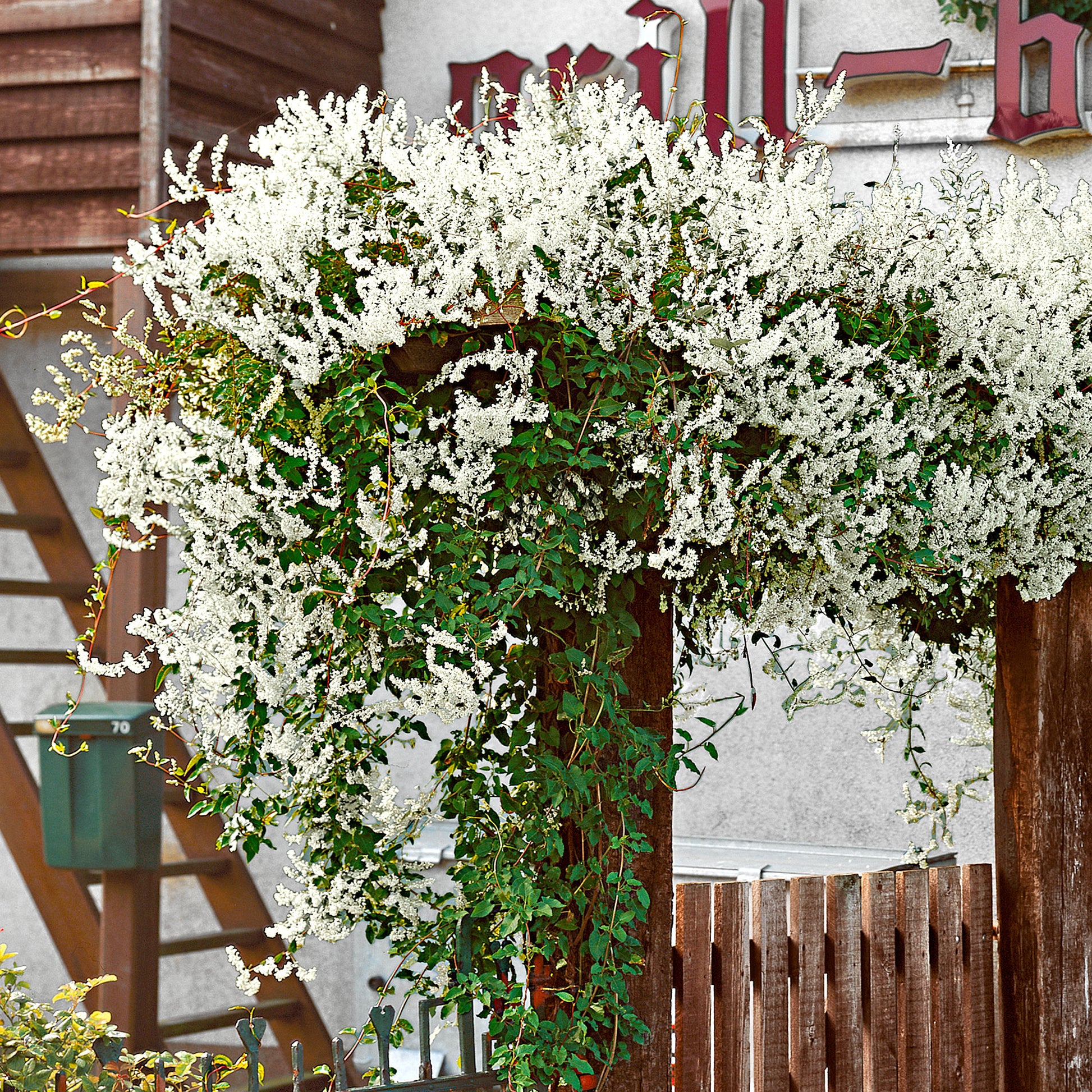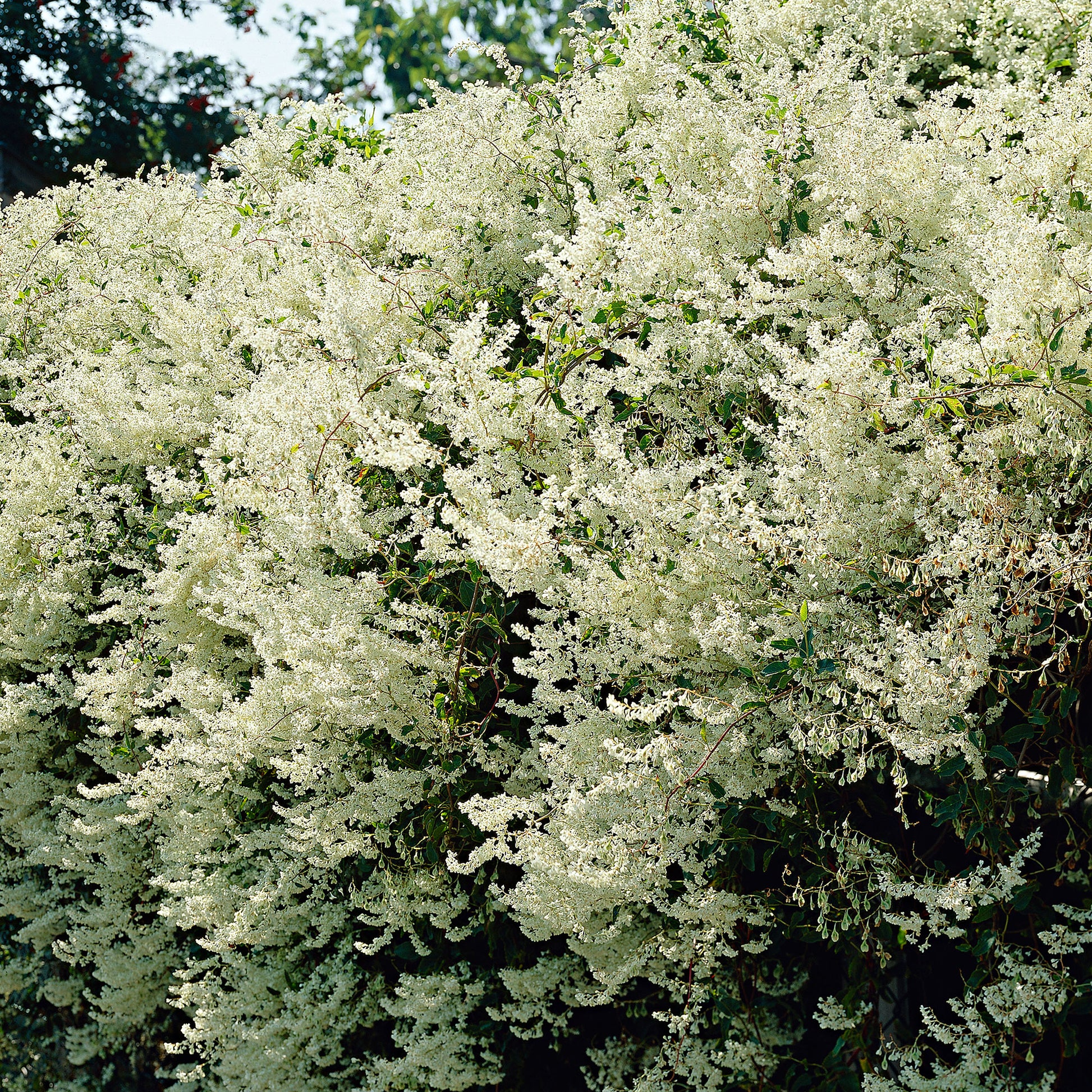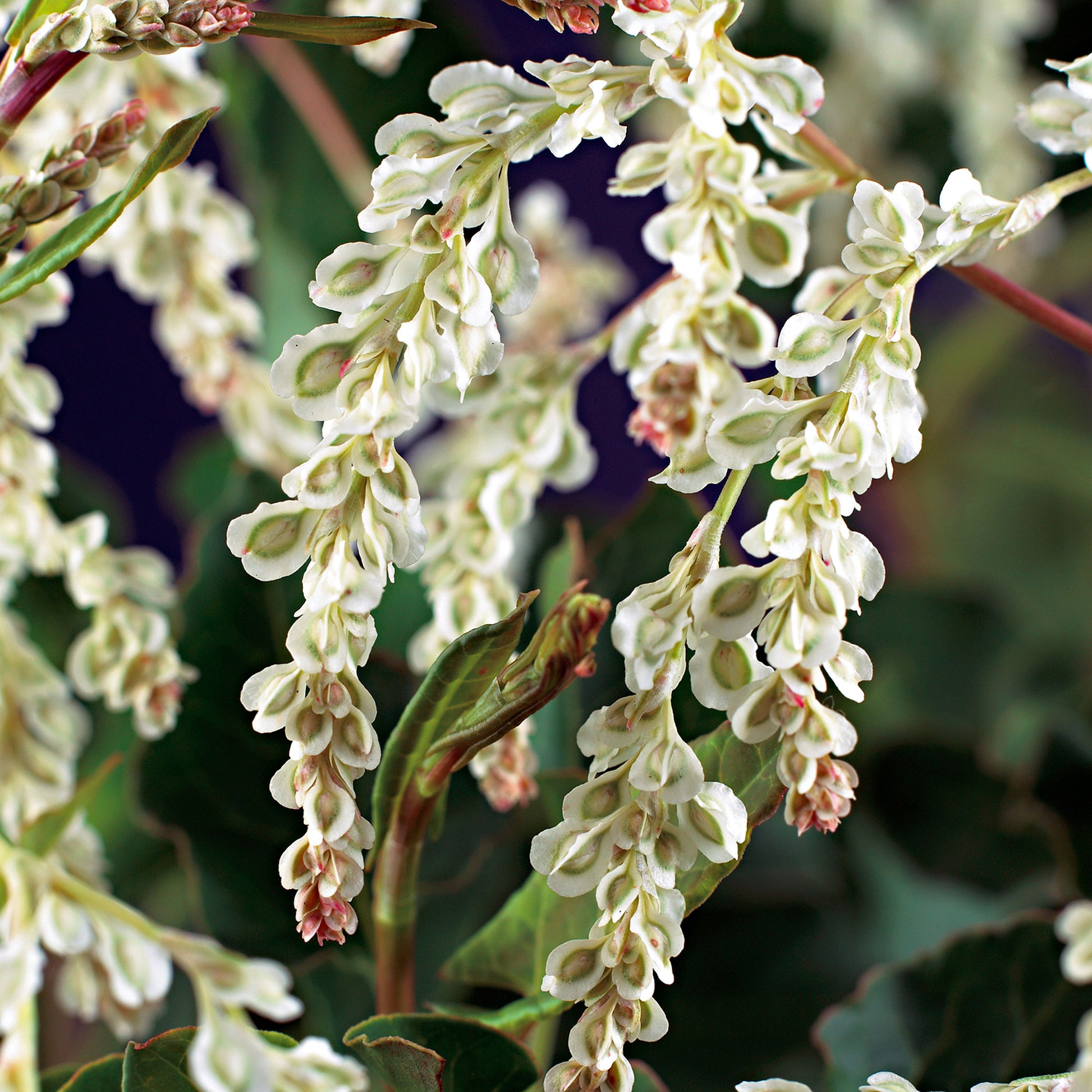- Home
- Garden Plants
- Plant types
- Shrubs
- Climbing shrubs
- Bukhara fleeceflower Fallopia aubertii White - Hardy plant
{{discount}}% off
1
/
of
5
White veil in the garden
A veil of small white flowers. The fragrant Bukhara fleeceflower 'Baldschuanica' (Fallopia) is an extraordinary climbing plant. The 'Baldschuanica' is one of the fastest-growing climbing plants. It won't take long before we can no longer see that less attractive wall in the garden. And, we'll have a lovely white veil to look at instead. The Bukhara fleeceflower also attracts butterflies and bees! The flowers bloom in the summer.
The climbing plant needs some kind of supporting structure while growing. We plant the plant against a wall, fence or pergola. Prune the Bukhara fleeceflower in the spring. Put the perennial plant somewhere in the sun. Water the plant regularly. The soil can remain somewhat moist.
The climbing plant needs some kind of supporting structure while growing. We plant the plant against a wall, fence or pergola. Prune the Bukhara fleeceflower in the spring. Put the perennial plant somewhere in the sun. Water the plant regularly. The soil can remain somewhat moist.
Bukhara fleeceflower Fallopia aubertii White - Hardy plant
Fallopia aubertii
This product is not in stock at the moment
Fast delivery, within 5 working days
Free afterpayment with Klarna
Sustainably packed with recycled packaging material
Fresh from the nursery
Largest product range of organic plants
Specifications
White
Supplied as container plant
Not edible
Flowering July - October
Growing height 200 - 600 cm
6 months growth and flowering guarantee
Hardy plant
Deciduous
Location: Half shadow
Location: Shadow
Planting distance 100 - 200 cm
Planting
Make sure the root ball of the Russian Vine is well-moistened by soaking it in a bucket full of lukewarm water overnight. Prepare a suitable hole in a moist well-drained soil. Plant the root ball at the appropriate depth in the hole. The top of the root ball should be just slightly below ground level. Fill the hole with soil and press firmly. Water immediately after planting. The Russian Vine grows well in regular garden soil and requires minimal maintenance. Are you planting this vine close to the wall? Please note that the soil may need attention and can be improved with compost or fertilized garden soil if necessary. Place this vine in full or partial sunshine.
The Russian Vine is a climbing plant
The branches of the Russian Vine are not self-adhesive and just hang freely from the plant and may be in need of a support. The rapidly-growing China Fleece Vine is ideal for a place where there is space for overgrowth, such as a garden shed. The Russian Vine is also a beautiful decoration for your pergola or even a good tree climber. The Russian Vine is best used as a solitary plant.
Care
The Russian Vine requires very little maintenance. Give it extra water during dry periods. Pruning is not absolutely necessary. Each year in spring if it becomes too rampant it can be pruned back. Pruning is well-tolerated and allows the Russian Vine to form many new branches.
Extra
The Russian Vine originally comes from China. The white flowers appear in clusters and are followed by white fruits. These fruits look rather like flowers so you may not even notice the difference. The Russian Vine is one of the fastest-growing vines. It branches may even grow up to 3 metres within a year and eventually the Russian Vine can reach a height of 10 metres. This climber is also known by its former name 'Polygonum aubertii' and also 'Fallopia aubertii'.
Description
White veil in the garden
A veil of small white flowers. The fragrant Bukhara fleeceflower 'Baldschuanica' (Fallopia) is an extraordinary climbing plant. The 'Baldschuanica' is one of the fastest-growing climbing plants. It won't take long before we can no longer see that less attractive wall in the garden. And, we'll have a lovely white veil to look at instead. The Bukhara fleeceflower also attracts butterflies and bees! The flowers bloom in the summer.
The climbing plant needs some kind of supporting structure while growing. We plant the plant against a wall, fence or pergola. Prune the Bukhara fleeceflower in the spring. Put the perennial plant somewhere in the sun. Water the plant regularly. The soil can remain somewhat moist.
The climbing plant needs some kind of supporting structure while growing. We plant the plant against a wall, fence or pergola. Prune the Bukhara fleeceflower in the spring. Put the perennial plant somewhere in the sun. Water the plant regularly. The soil can remain somewhat moist.




